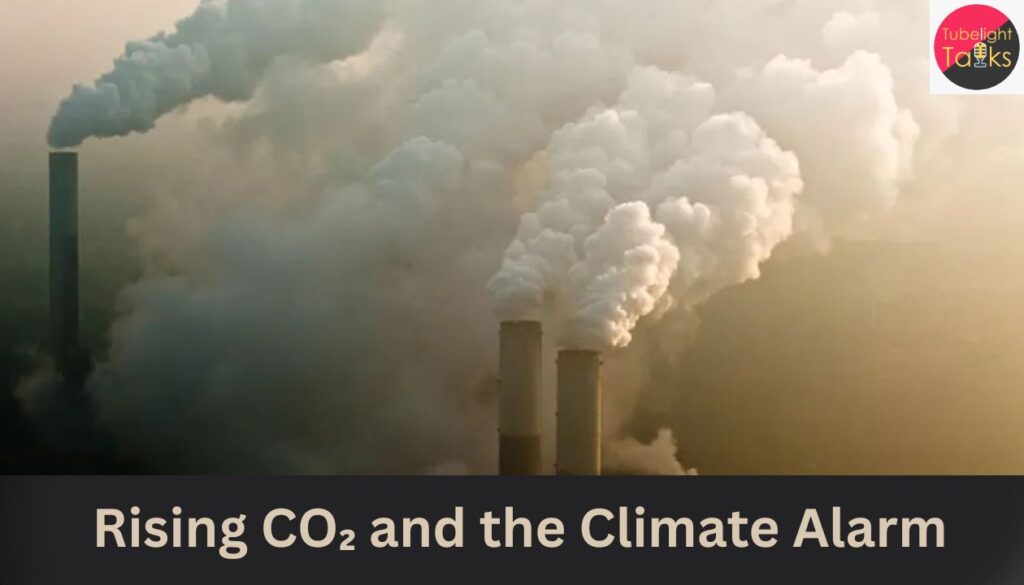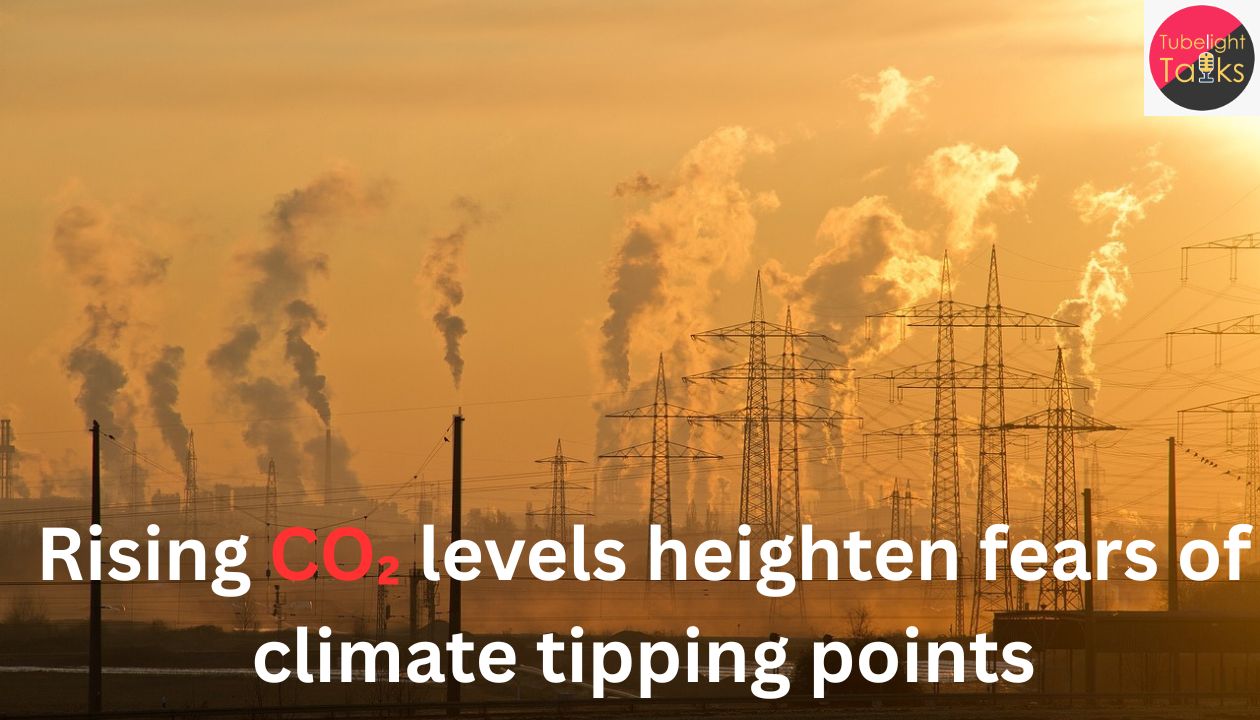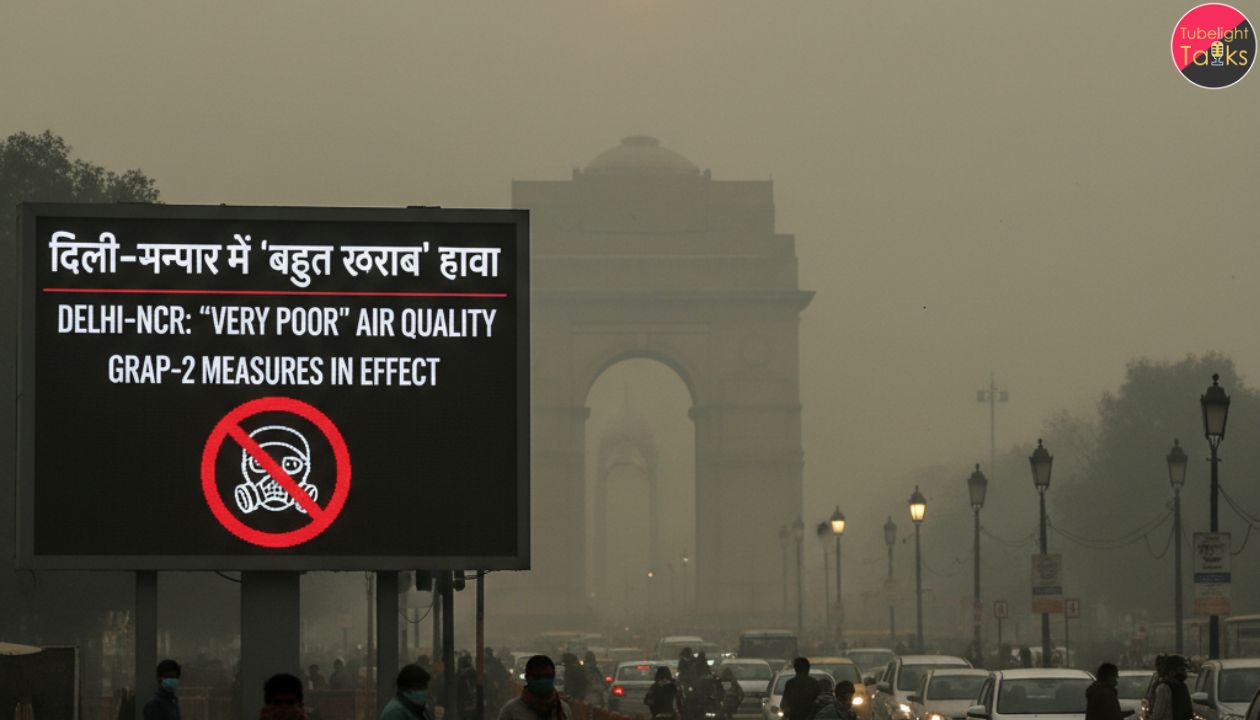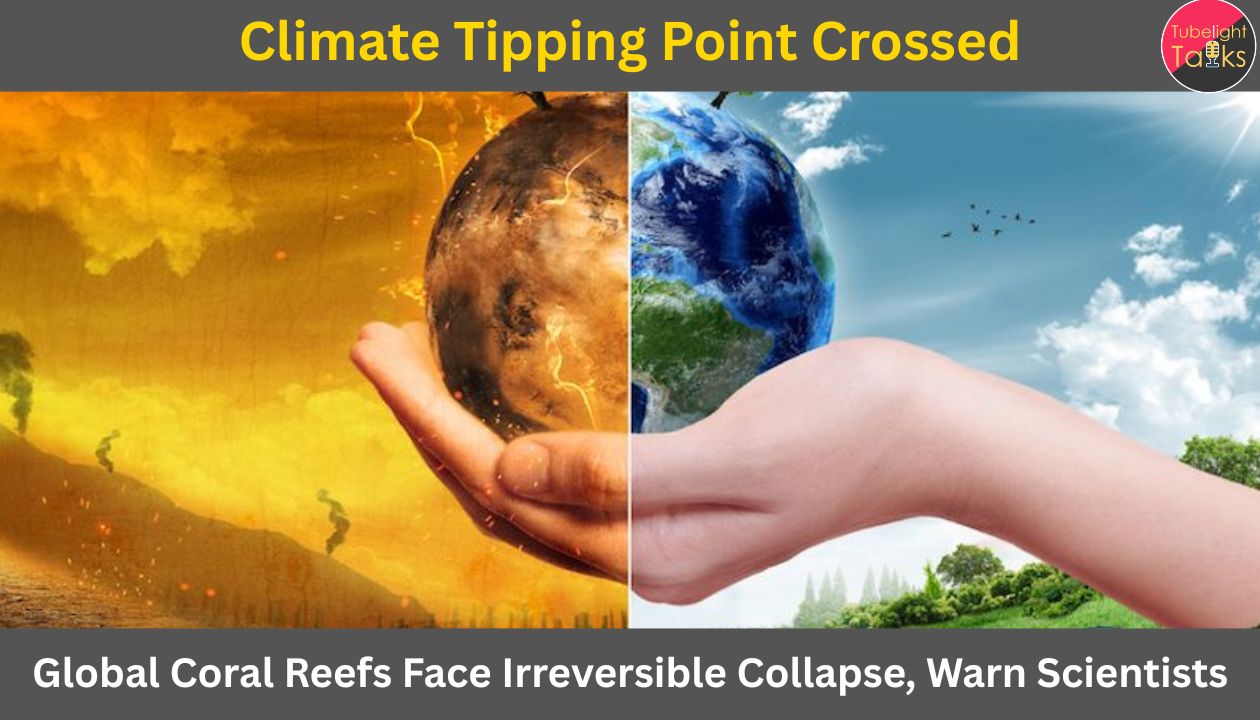Global carbon dioxide concentrations have soared to unprecedented heights, marking the largest annual increase ever recorded, according to a report by the World Meteorological Organization (WMO). Scientists warn that this spike intensifies the risk of crossing climate tipping points — from coral reef dieback to Amazon collapse — in a world already grappling CO₂ rise with extreme heat, wildfires, floods, and droughts. With the 2025 COP30 summit imminent, the new data adds urgency to global climate negotiations.
Rising CO₂ and the Climate Alarm

The New CO₂ Record
Between 2023 and 2024, atmospheric CO₂ rose by 3.5 parts per million (ppm), the largest single‑year increase since modern monitoring began in 1957.
This surge is attributed largely to increased fossil fuel combustion, intense wildfires, and weakening carbon sinks (forests, oceans) under stress from heat and drought.
Methane and nitrous oxide levels also hit new highs, further compounding the greenhouse effect.
Implications for Extreme Weather
Higher greenhouse gas levels intensify global warming, making extreme events — heatwaves, heavy rainfall, storms, floods — more frequent and severe. The WMO warns that the planet is edging closer to tipping thresholds in multiple systems.
Already, parts of the globe are experiencing pronounced anomalies: prolonged droughts in some areas, record floods in others, and destabilization of traditional weather patterns.
Tipping Points: Where Climate Systems May Flip
Coral Reefs Dieback
A recent global tipping points report, authored by 160 scientists, points to coral reefs crossing their thermal threshold. The oceans’ warming has pushed reefs into widespread bleaching and collapse.
Once coral ecosystems collapse, the loss is not just ecological — millions of communities, fisheries, and coastal protections depend on reefs.
Amazon Rainforest & Vegetation Collapse
The Amazon rainforest, a major global carbon sink, faces the risk of transitioning from absorber to emitter if deforestation and heat stress push it past a threshold. The tipping points report warns that crossing this boundary may be closer than expected.
Ocean Circulation Disruption
The Atlantic Meridional Overturning Circulation (AMOC), which moderates northern climates, is under threat from warming and freshening of ocean waters. Disruption here could trigger abrupt climate shifts in Europe, Africa, and beyond.
Other Systems at Risk
Other potentially vulnerable systems include ice sheets in Greenland and Antarctica, permafrost melting releasing methane, and hydrological cycles becoming more erratic.
Also Read: Warning of more extreme weather
Drivers Behind the CO₂ Rise Escalation
Fossil Fuel Emissions & Energy Demand
Economic recovery, industrial expansion, transport fuel demand, and inadequate energy transition continue to drive high CO₂ emissions.
Wildfires & Land Use Change
Massive wildfires, especially in the Amazon, Australia, Siberia, and parts of North America, released vast carbon amounts and weakened land carbon uptake.
Forest degradation, deforestation, and land conversion further undermine the ability of terrestrial ecosystems to absorb CO₂.
Also Read: India’s Fertility Rate is Decreasing
Weakening Carbon Sinks
Rising temperatures, drought stress, and ecosystem damage reduce the efficiency of oceans and forests in absorbing CO₂. Some studies suggest sinks may already be losing capacity to cope with increasing emissions.
Feedback Loops and Amplification
As warming intensifies, feedbacks (e.g. thawing permafrost, reduced snow cover, soil carbon release) further accelerate greenhouse gas growth, pushing the climate system into non‑linear shifts.
What This Means for COP30 & Climate Policy
Heightened Stakes at COP30
The record CO₂ rise and imminent tipping risks change the negotiation dynamics at the 2025 COP30 summit in Belém, Brazil (10–21 November 2025).
Countries will face pressure to commit to more ambitious Nationally Determined Contributions (NDCs), increased finance, stronger mechanisms for loss & damage, and tighter accountability.
Legal and Ethical Accountability
In July 2025, the International Court of Justice opined that wealthy nations have binding obligations under international treaties to curb emissions and compensate harm to vulnerable states.
Such legal pressure may shift the paradigm toward enforceable climate justice.
Need for Rapid Emissions Cuts & Transition
To delay or avoid crossing tipping thresholds, immediate and steep reductions in CO₂ emissions are essential. That calls for faster deployment of renewables, phase-out of fossil fuels, energy efficiency, carbon capture, reforestation, and sustainable land use.
Financing & Equity Challenges
Many developing countries argue that climate action requires massive funding, technology transfer, and capacity building. Without equitable climate finance, ambition may falter.
Inner Awareness Amid Earth’s Crisis
While the world debates policies, agreements, and emissions figures, Sant Rampal Ji Maharaj’s Satgyan teaches that real transformation begins inward. External measures—even if critical—must be matched by inner clarity, truthfulness, and harmony. As humanity stands at the precipice of ecological tipping points, only when societies anchor themselves in spiritual wisdom and moral integrity can we hope to respond to the climate emergency sustainably and compassionately.
Monitoring, Adaptation & Risk Management
After COP30, attention must turn to:
• Tracking actual emissions vs commitments
• Strengthening early warning systems and climate resilience
• Investing in adaptation for vulnerable regions
• Enforcing transparency, verification, and accountability
• Supporting climate justice and loss & damage frameworks
Emerging Realities for Our Planet
This record CO₂ escalation highlights that we are likely closer to climate thresholds than once thought. The risk that systems like coral reefs, Amazon forests, or ocean currents will irreversibly shift is no longer hypothetical — it is alarming and immediate. Global leaders, civil societies, businesses, and citizens must confront this reality with urgency, courage, and sustained action.
FAQs: Rising CO₂
Q1: What caused CO₂ levels to rise so sharply in 2024?
The sharp increase was driven by elevated fossil fuel burning, intense wildfires, and weakened carbon uptake by forests and oceans.
Q2: What is a climate tipping point?
A tipping point is a threshold beyond which a system (e.g. rainforest, coral reef, ice sheet) changes irreversibly, shifting from one state to another.
Q3: Which systems are considered closest to tipping?
Coral reefs, the Amazon rainforest, ocean circulation (AMOC), and permafrost are among systems scientists warn are near critical thresholds.
Q4: How does this affect climate negotiations at COP30?
The data adds urgency, raising pressure on nations to commit to deeper emissions cuts, climate finance, accountability mechanisms, and stronger climate justice measures.
Q5: Can the Earth still avoid the worst tipping points?
Possibly, if global emissions drop swiftly, carbon sinks are restored, feedback loops are restrained, and adaptation is scaled. But delay narrows pathways and increases risk.










